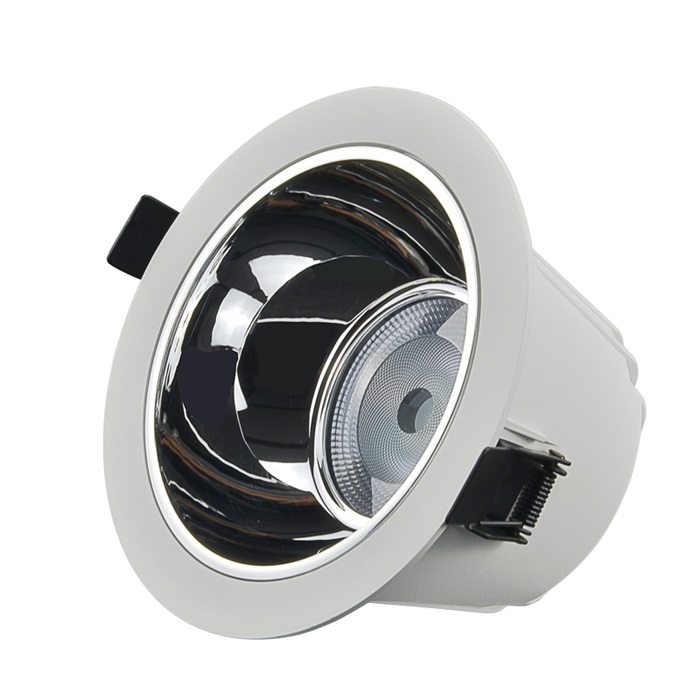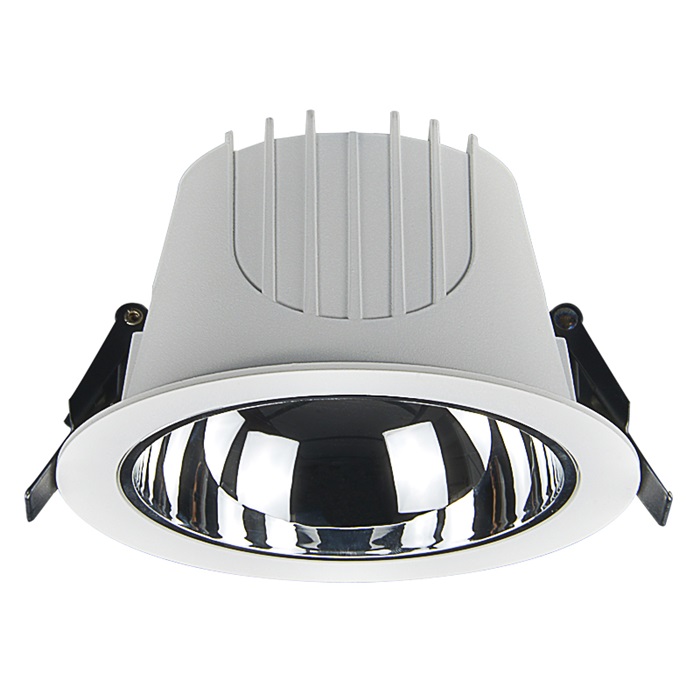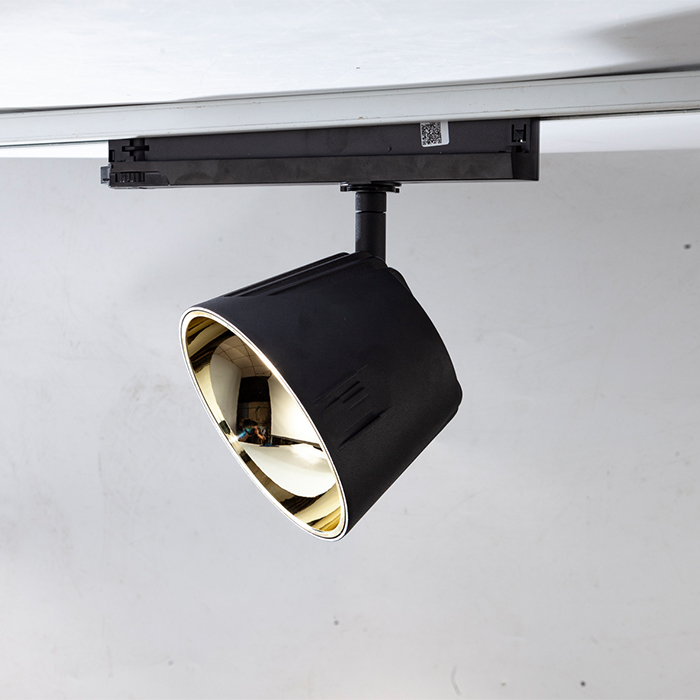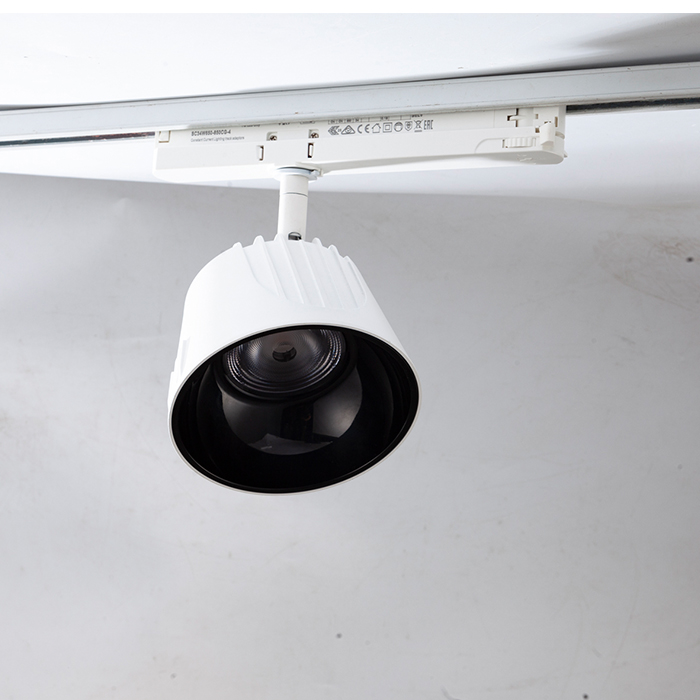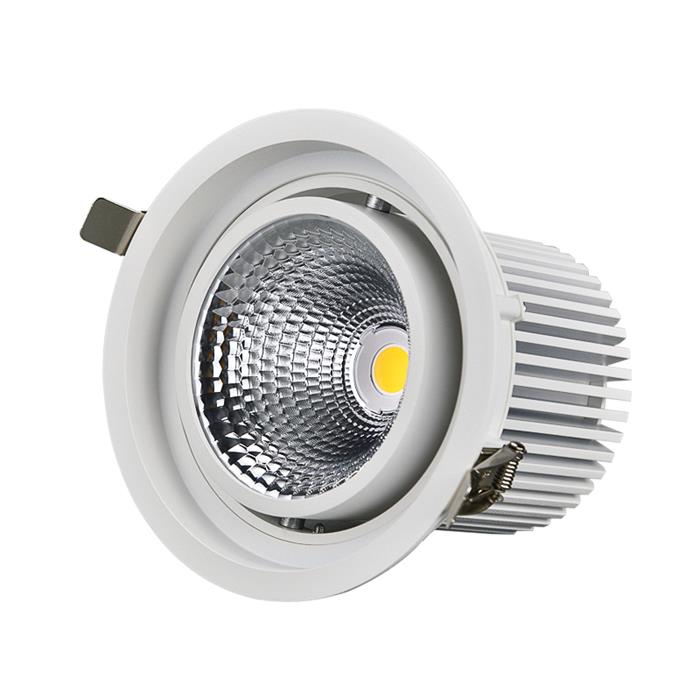Delicate Decorations Determine Home As Recessed LED Downlights Do
- By:Ronse
- Date:2022-09-29
Downlights, also known as recessed fixtures, are a key component in many residential lighting designs. Downlights can add a touch of sophistication and style to any living space. With today’s LED technology, downlights can also reduce electricity consumption and maintenance costs. When you install the recessed led downlights in your room, determine the overall needed then area to them exactly the very same apart throughout the space. Recessed lights differ from other types of fixtures because of the many different options for trims, lenses, and reflectors. While fixed recessed lighting is the standard style, you can also purchase recessed fixtures that can be rotated and provide a variety of functions depending on construction, trim and angle. Eyeballs and pans are two styles of recessed lighting that are becoming increasingly popular because you can point them in specific directions. Below is a brief overview of some of the advantages of LED downlights.
What Are Downlights ?
Downlights are among the most typical lighting components you will see in any contemporary house. Because they offer warm basic lighting that’s unobtrusive compared to a traditional light fixture, they’re exceptionally popular. Nevertheless, there are great deals of factors to consider when buying the ideal one. Should you choose LED or halogen bulbs? What’s the ideal wattage and spacing? For smart LED downlight, the lifespan is 50,000 hours, which is around 27 years if it’s switched on 5 hours a day. As you can see these are even more affordable in the long run. However, if you’re puzzled about lumens do not worry! Below is a chart that gives you a guide to the brightness of lumens per watts as compared with incandescent bulbs.
What Are Lumens ?
It utilized to be you might take a look at the watts on a light bulb’s product packaging and figure out the brightness of the light. This is still the case for halogen and fluorescent lights, but for LED lights the wattage is usually constantly low because of the energy-saving technology. As a result, we now use lumens (lm) to understand the brightness of the LED lights. Lumens measure the overall amount of visible LED light from a bulb. The higher the lumens the brighter the LED light.
Colour Rendering Index (CRI).
CRI implies the light source’s capability to expose the color of items faithfully in contrast with natural sunlight. The index is measured from 0-100, with a best 100 suggesting that colors under light appear the like they would under natural sunshine. Generally, a CRI of 80 – 90 will be within the range of precise color making.
Downlight Beam Angle
The beam angle is the amount of light that spreads out from the light and can be measured in degrees. A lot of them have a beam angle of 45 ° because they are recessed. By contrast, a regular light bulb would have a 360 ° beam angle. Due to the fact that they are recessed, we recommend selecting a pendant downlight with a broader beam (of 60 ° )if you desire soft scattered lighting e.g. in the living room. If you are taking a look at downlights for the kitchen, nevertheless, a narrower beam (of 25 °) angle is preferable because it will give you a concentrated light, best for when you require to focus and light up surfaces on smaller details within the space.
Listed below we’ve compiled an easy guide to assist address your questions. Whether you’re thinking of setting up LED downlights or already have them, here’s how to pick the right one for you. Typically, if you’re not sure about which beam angle to pick, anything from 60 to 120 degrees works fine in the majority of cases. Below is a photo to help you visualize the beam angle. We still get asked a lot in store how do you alter a LED downlight? If it is constructed in or not, this depends on. The majority of nowadays are integrated into with a repaired light and chauffeur separate with a plug like a picture listed below, when the light is built-in you can just change the entire fixture consisting of the downlight driver. The motorist is engineered to run with this light just, you can’t just buy another motorist to run the light you must change the whole downlight package.
Led Downlights vs Halogen – Wattage
For wattage, you desire your downlights to be energy-saving yet still produce a high beam. For this reason, we encourage you to use LED downlights. The typical 10W LED downlight can produce a beam twice as bright as halogen that consumes 55W. The very best choice in terms of energy-conserving can vary from as low as 4.5 watts to 14 watts in LED. We suggest a natural white 4000K as a good all-rounder. It’s cool, clean, and feels warm however does not subdue your eyes – it’s like you have a natural skylight coming through the ceiling. Below is a photo so you can see the distinction in color temperature level.
Downlight Lifespans
This, obviously, depends on the type you invest in. Halogen downlights last for 2,000 hours on average. Many discover that they change the majority of their halogen globes within a 12-18 month duration.
Energy Efficiency – Lumens Per Watts
When selecting downlights the LED option is a balance between effectiveness (watts) and brightness (lumens). For instance, if you usually use a 60-watt incandescent bulb, you now most likely wish to pick a LED downlight that uses 8 to 12 watts and has a lumen ranking of 800 for the exact same amount of lighting. if you are using a wider beam you can normally space the downlights 1.2 to 1.5 meters. If you are using a focused beam light, attempt to space them 1 meter away from each other. Whatever the room size it constantly looks much better with pools of light instead of glaring light in your eyes, it will create much more ambiance in your space. If choose to have your lights rendering gorgeous, lively tones throughout the full-color spectrum we advise a high CRI (90+) in a mix with a color temperature that’s middle of the range (4000K).
Considerations For Select Recessed LED Downlight
1. The Led Colour Temperature Must Be 2700k
When purchasing LED recessed downlight for your house, you want the very same warm, ambient feel you are used to obtaining from halogen and incandescent lights. ‘Warm white’ sounds ideal– however, it’s simply a description and not an extremely accurate one. To get the impact you desire it’s much better to try to find the real color temperature, which is determined in Kelvin (K). To recreate the warmth of halogens and incandescent lights you need a ranking of 2700K.
2. Pick An Led With A Cri Of 95+
Colour Rendering Index (CRI) The CRI tells you about the ‘quality’ of light you’re getting. It’s a measurement of how well the light will reproduce the real balanced color series of the things it illuminates. The majority of LED downlights have a Colour Rendering Index score of 80. That’s fine for lots of uses in the home, but if you do not desire a 20% drop in light quality when you change over to LED, you need lights with a CRI of a minimum of 95. Traditional halogens and incandescent lamps have a CRI score of 99 out of 100, which means we are all utilized to a remarkable quality of light. So if you have a beautiful brown leather chair or brilliant cushions and you want them to look their finest, you need a high CRI score.
3. Get A Lifespan Guarantee On The Whole Led Bulb
LED businesses often let optimism get the much better of them when it comes to stating the life-span of a light. An excellent quality LED chip can last up to 50,000 hours, however, the recessed led spotlights you buy will only last as long as its other parts– which basically means the power supply. A lot of power supplies have a life of 10,000– 20,000 hours. At Well-Lit, we’ve evaluated a great deal of LED products. We’ve yet to discover an LED spotlight that’s developed to last 50,000 hours. What we do discover are areas with components that are just incompatible with the life expectancy being claimed. Idea: Make sure the assurance you get is for the entire LED Lamp and not the LED chip alone. If the lights stop working however the LED would still be practical– as it usually is, this prevents problems.
4. Select An Led Downlight With Great Heat Dissipation
Without effective heat dissipation to protect the important elements, high temperatures will have a severe effect on efficiency and reliability. Designing and constructing an efficient heat dissipation system needs specialized skills and high-quality materials. Cutting corners in this location is a sure method to produce LEDs more cheaply but at the expense of long-lasting reliability. As we’ll see quickly, the capacitors inside the power supply can be especially susceptible. But for now, let’s discover what good and bad heat dissipation looks like in practice. The first image shows an LED area that’s extensively available in the UK. The red color indicates the most popular areas. The heat dissipation system is practically non-existent, and the produced heat is maintained in the worst possible place– in the LED location simply under the lens assembly. After just a couple of hours’ usage, the heat will begin to jeopardize the durability of the chip. The possibilities of this LED spotlight reaching its claimed lifespan are remote.
5. Select An Led Downlight With A High-Quality Power Supply
Many brand-new converts to LED lighting are disappointed to find their lights stop working completely within a year or two of purchase. We find the cause is generally the capacitors in the power supply– not the LED itself when we get these lights on the workbench. These capacitors have an optimum temperature level rating of anywhere between 80 degrees C to 130 degrees C. The higher the rating, the higher the expense to the maker– you can most likely guess the rest. Constant operation at the maximum temperature will minimize the lifespan of the item. Running above the optimum scores is even worse. Here you can see a range of power products we’ve recently gotten of LED Lamps on basic sale in the UK. One good one, the rest a mixture of low cost, poor quality parts, and even some prospective fire risks.
Choose The Best Downlights For Bathrooms
Some Things Should Be Considered
- Brightness. The brightness of a bulb is measured in lumens (lm), and it informs you how strong (or weak) a light is. It can make or break the lighting of your entire space, so make certain you’re set on the result you’re aiming for.
- Beam Angle. Beam angle tells you how broad the beam is. So, for focal points, get a narrower beam and use a broader beam for accent lighting.
- Colour Temperature. Light can be found in a range of color temperature levels. Warm whites are better for producing a calming, unwinding environment however aren’t best for performing any tasks. On the other hand, cool whites and natural whites are brighter and more apparent, making them ideal for work but a bit strenuous for unwinding.
- Style. The bezel is the only part noticeable in a downlight, and considering that it does not affect the total quality and performance of your lights, it only needs to please you and fit your style. Ensure to pick something that will complement your bathroom decoration. White bezels are the most universal and most often picked.
- Fire-rated. All lights are thoroughly checked, however, not all are fire-rated, which suggests that they meet all the fire safety requirements.
Where Should Downlights Be Placed in a Bathroom?
The positioning of your restroom surface mounted downlight is crucial for accomplishing the most pleasing and functional impact. The very first and the most essential thing you need to bear in mind is safety measures. Make sure you put the ideal lights in the proper zones if your lights vary when it comes to IP rating. Another thing to think about is how you will be utilizing your bathroom downlights. Knowing this will permit you to choose the proper brightness, temperature level, and beam angle. For instance, a mirror where you put your makeup on or shave your facial hair is an important centerpiece that ought to be well-lit.
How Many Downlights Do You Need in a Bathroom?
Of course, the last number will depend upon the size of your bathroom and the preferred result. However thinking about that your bathroom has three zones, 3 downlights are an absolute minimum. Led recessed downlight is versatile enough for you to experiment– you can either produce some centerpieces in a room or light it up completely. It’s vital to identify all focal points to make sure that you have the proper lighting whenever you need it. Keep in mind that it’s constantly much better to have more lights than end up with too little if you have some doubts. You can always utilize a dimmer switch to control its use. Due to the fact that you have to bear in mind that water and humidity are present which does not go well with electrical energy, Lighting the bathroom can be a bit difficult. Fortunately, there are precautions that you can follow, which do not restrict your design selection. Because of their adaptability, energy effectiveness, and safety, downlights (primarily LED downlights) are among the most popular options for restroom lighting.
What Are the Bathroom Lighting Zones ?
To select the lights with the proper IP score, it would be useful for you to know what the restroom lighting zones are.
- Zone 0– Refers to locations immersed in water, such as the floor of your shower. For this zone, you will require a minimum of IP67.
- Zone 1– It is the area near a water source, e.g., straight above a shower. Here, an IP67 is suggested also, however, IP65 would also suffice.
- Zone 2– Indicates the perimeters of Zone 1, for which you will require IP44 rated lighting, which is the most typical ranking for restroom lights.
- Zone 3– There will be no water utilized, however thinking about the humidity of the entire space, you must go with at least IP20 ranked lights.
What to Consider While Choosing Downlights ?
The abundance of LED downlights readily available on the market can be frustrating, so we have prepared a shortlist of things to think about while picking your LED Downlights.
Do You Need Special Downlights for a Bathroom ?
There aren’t any downlights clearly designed for a bathroom, but various types might vary in features. What you require to think about while selecting is the IP Rating. It specifies if the item is protected against other possibly harmful particles like solids or liquids. The absolute minimum IP score for the restroom must be IP44. However, if you’re thinking about putting your lights very near water sources (zone 1 of a restroom), you must go with at least IP65 or above to be 100% sure of its security. Most people normally disregard restroom lighting in the past. It was everything about performance and never about looks and design. They focused more on picking under-cabinet lights for the kitchen area, beautiful chandeliers for the living rooms, and ambient lights in the bedroom. Now, that has changed.

